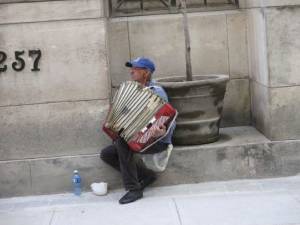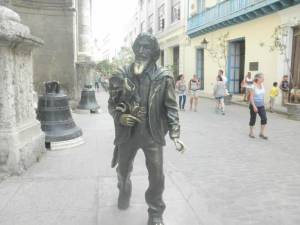My Own, Private Havana
Irina Pino

HAVANA TIMES — There’s a beautiful Havana out there. It’s the Havana sold to tourists, the one that appears on postcards, with startling architectural treasures, an abundance of hotels, beaches, restaurants and freshly-restored vintage American cars (which prove good business for their owners). These same cars, incidentally, are the ones that befoul the air the city’s residents breathe.
We have Old Havana, with its horse-drawn carriages, a cruel destiny for those beasts of burden that go from one corner of the city to the other, without protesting, lowering their heads submissively, denied freedom, just to give the happy visitors a tour around town.
 In town, you can run into girls wearing short, tight-fitting and highly revealing clothes, women who smile and call just about everyone “love.” If the man is a foreigner, he is more likely to successfully ask them out on a date.
In town, you can run into girls wearing short, tight-fitting and highly revealing clothes, women who smile and call just about everyone “love.” If the man is a foreigner, he is more likely to successfully ask them out on a date.
Many people are put off by the sight of a beggar or a homeless person missing a leg. Others pass by the city’s ruined tenement buildings and turn their heads away, unwilling to acknowledge it’s another Havana, one that is falling to bits, living under the shadow of waiting, a place where, despite the wait, one can still sense a glimmer of hope among people.
There is no shortage of marvelous vistas. The view from the Christ of Havana can take one’s breath away, to give one the feeling one is gazing upon a dreamscape. Strolling down the Malecon ocean drive affords us glimpses at thousands of faces, people who converse and have fun, sitting in front of the ocean, a place where the young pass the time with a bottle of rum or some beers.

Street musicians go by, hustlers sing the night through to take some money back home. The Malecon is a cheap place, a place where the haves and the have-nots end up. The ocean has the power to soothe and make one forget.
The churches and their bell, the broad squares, transport us to ancient times. There, the air is cleaner and one can find a spot to think in peace.
One gets lousy service at public spaces, where a kind of psychological violence and lack of manners reign among Cubans.

La Rampa, 23rd street, the Coppelia ice cream parlor, these were once brightly-lit places that are today ghostly shells of their past selves. The city, however, still has libraries, theaters, cinemas – empty, when no festival is on – nightclubs where once can dance and listen to music (some more affordable than others) and agreeable parks, even though many have been abandoned to their own resources and are pitch-dark at night.
Time in Havana doesn’t transpire as it used to. Once, it was pleasant to stroll aimlessly around town in the early hours of the morning, carefree. Now, one has to invest in every minute. To be part of the city is one thing, but to love it, to know how to look upon it, is another.






This February will be my fourth trip to Cuba. It is a fascinating country full of contrasts. Irina’s prose reminds me of Reinaldo Arenas’ book, “Before Night Falls”. I think she should write a book of her own!
I agree Stephen. Irina adds much to this venue in giving me an open view of life in Havana most of us who haven’t been too is really like. Too be fair, having grown up in NYC, there were places that were truly decrepit and frightening that I’m sure the residents of were glad to leave and visit the tourist spots as well. It seems Cuba is hundred times worse and in dire need for investment dollars to fix the problem. Tourism is only going to get larger in volume so time is of the essence.
Another revealing article. Thanks again.